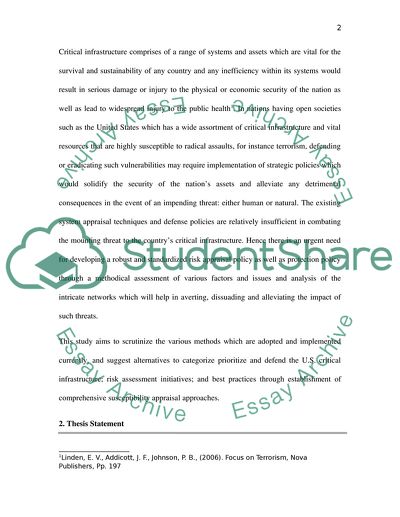Cite this document
(Vulnerability Of United States Critical Infrastructure Research Paper, n.d.)
Vulnerability Of United States Critical Infrastructure Research Paper. Retrieved from https://studentshare.org/sociology/1722759-vulnerability-of-united-states-critical-infrastructure-background-and-policy-options
Vulnerability Of United States Critical Infrastructure Research Paper. Retrieved from https://studentshare.org/sociology/1722759-vulnerability-of-united-states-critical-infrastructure-background-and-policy-options
(Vulnerability Of United States Critical Infrastructure Research Paper)
Vulnerability Of United States Critical Infrastructure Research Paper. https://studentshare.org/sociology/1722759-vulnerability-of-united-states-critical-infrastructure-background-and-policy-options.
Vulnerability Of United States Critical Infrastructure Research Paper. https://studentshare.org/sociology/1722759-vulnerability-of-united-states-critical-infrastructure-background-and-policy-options.
“Vulnerability Of United States Critical Infrastructure Research Paper”, n.d. https://studentshare.org/sociology/1722759-vulnerability-of-united-states-critical-infrastructure-background-and-policy-options.


